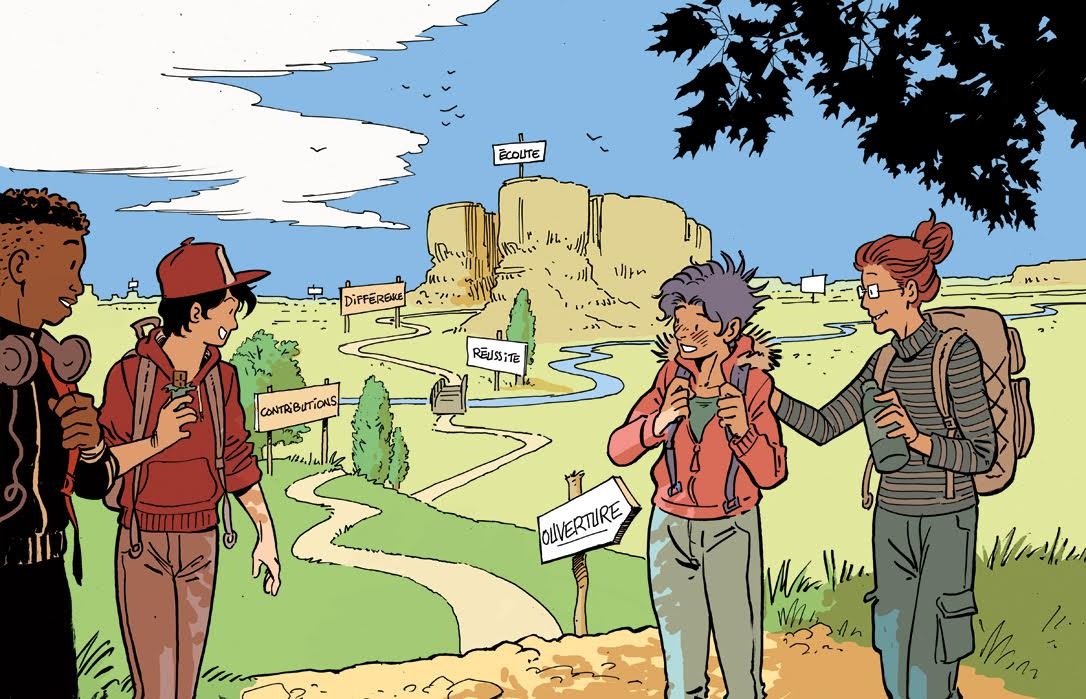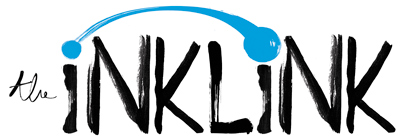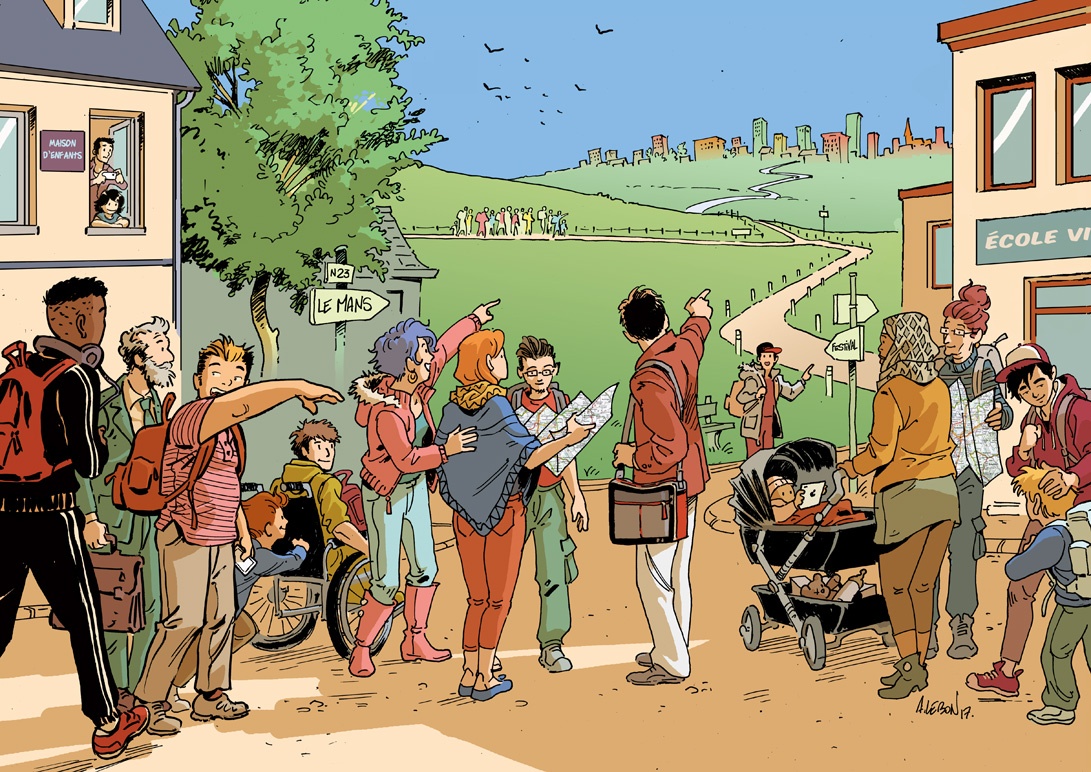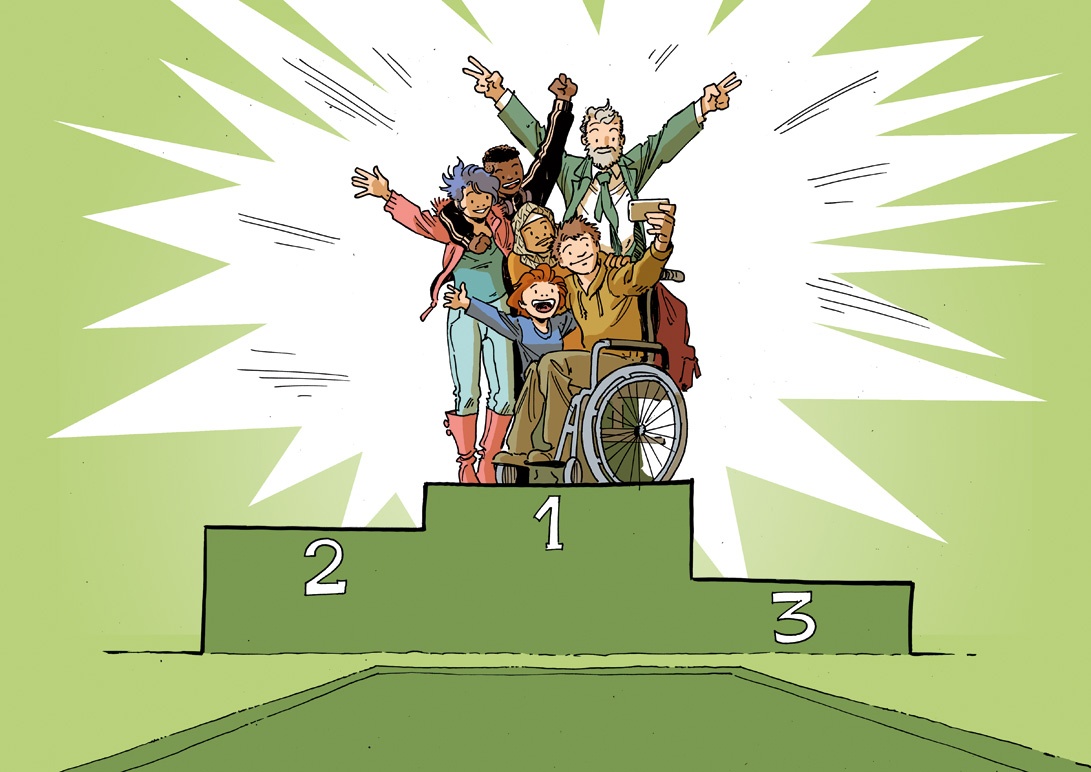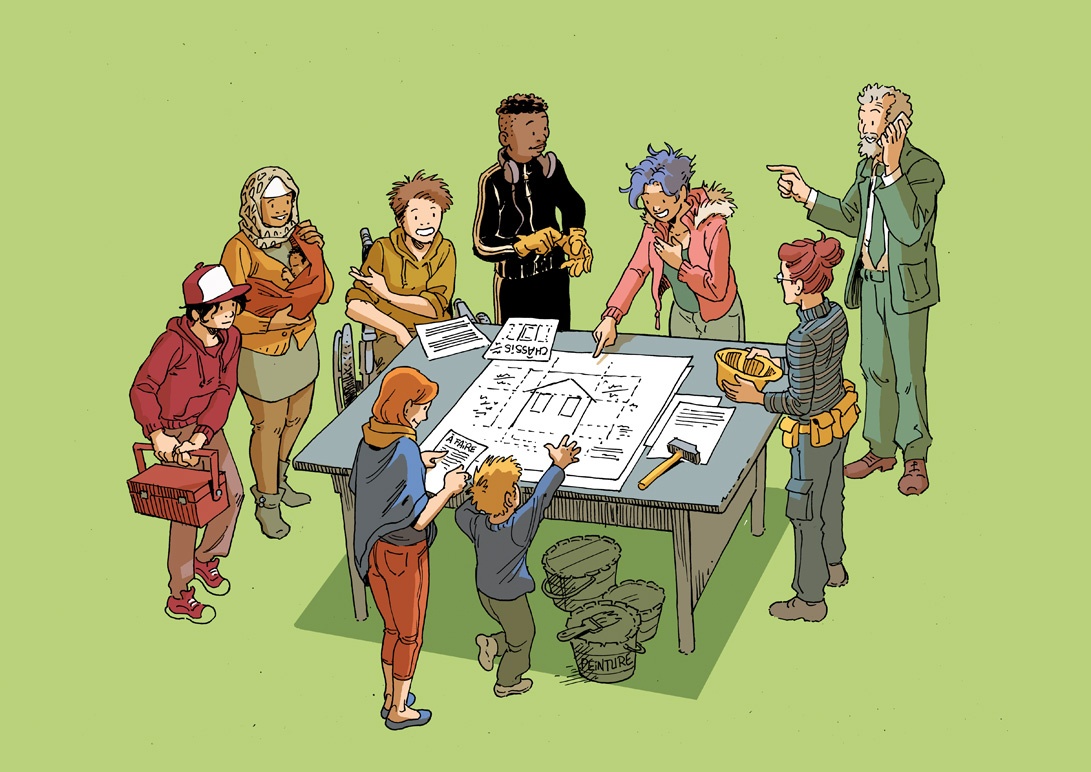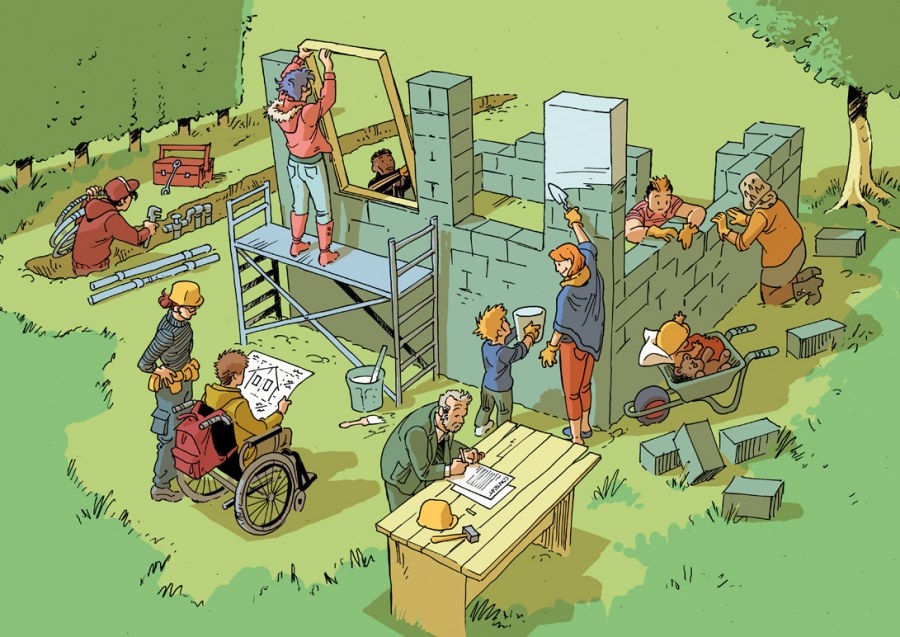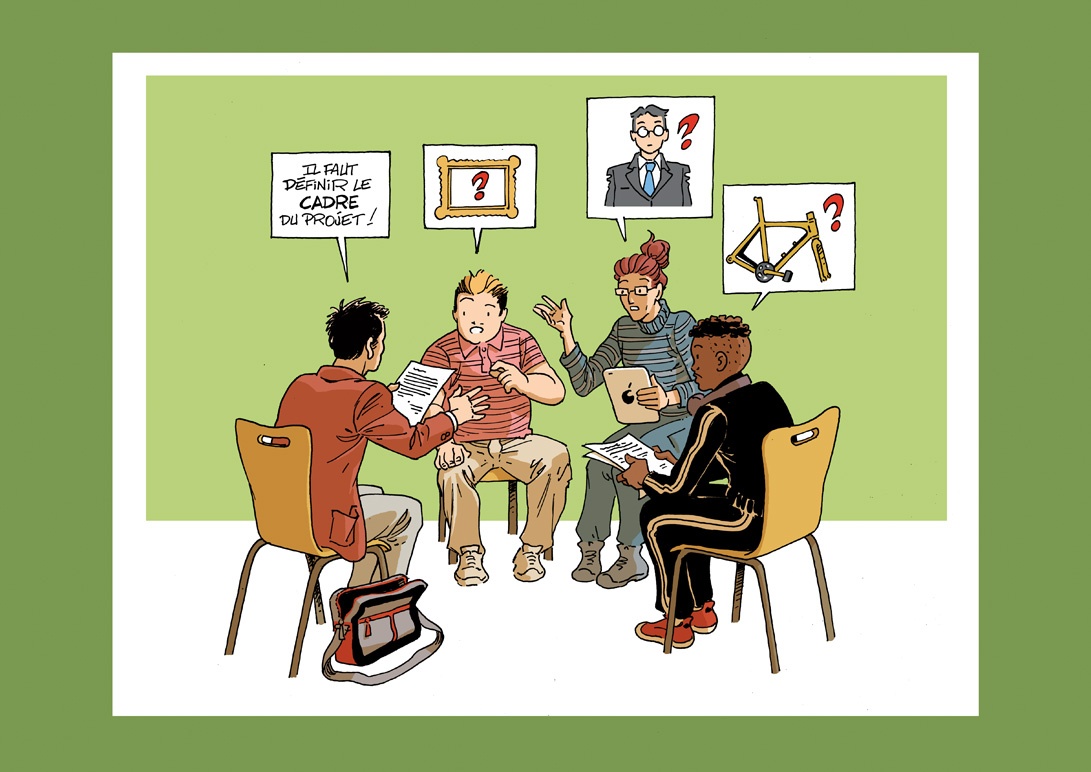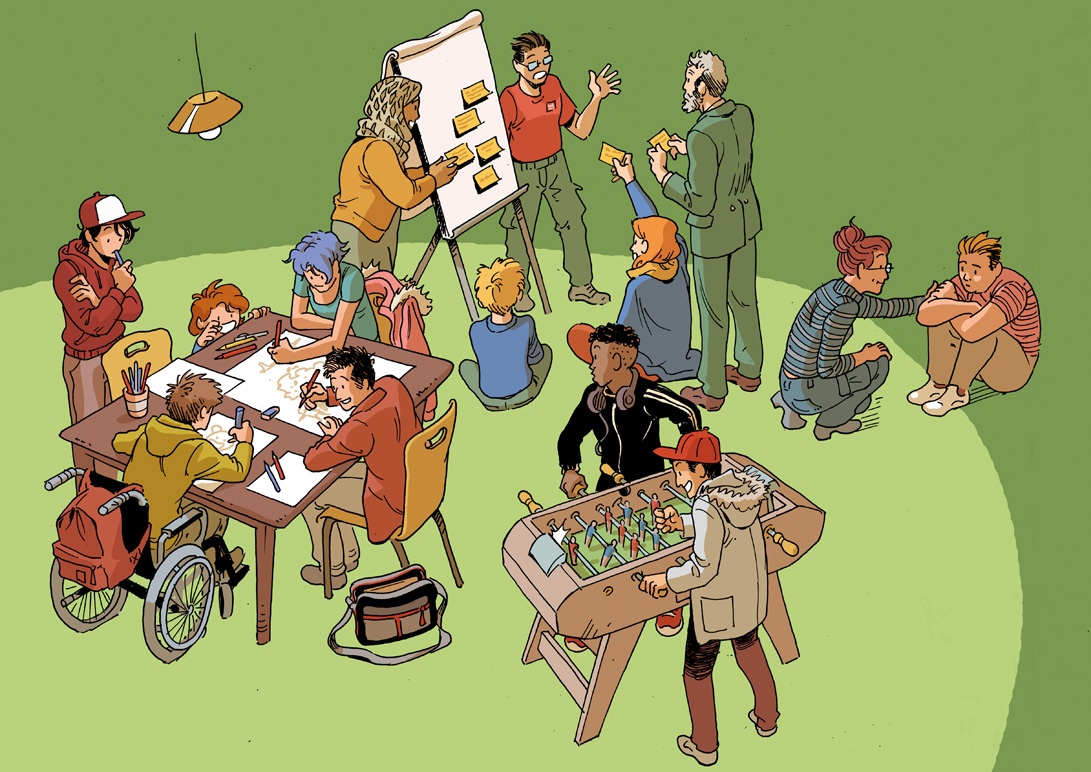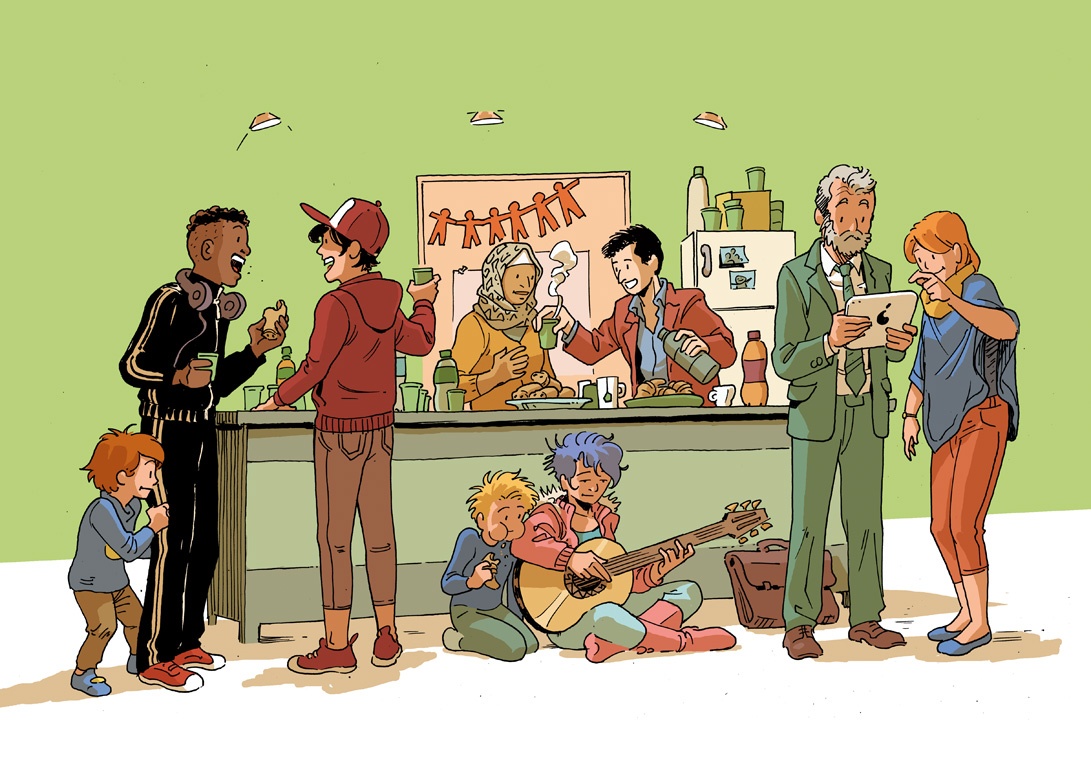Thinking and acting together, facilitating dialogue within NGOs
Dialogue for the Fondation des Apprentis d'Auteuil
For the Fondation des Apprentis d'Auteuil, which welcomes over 20,000 young people and 6,000 families every year, improving this dialogue had become a priority.
In October 2016, the exchange between The Ink Link and the Apprentis d'Auteuil began: the Foundation wanted to create a guide on Thinking and Acting Together, developed in a participative way between employees, young beneficiaries and volunteers. The drawing was to serve as a means of mediation, to represent the right attitudes to better take into account the expectations of the Foundation's beneficiaries.
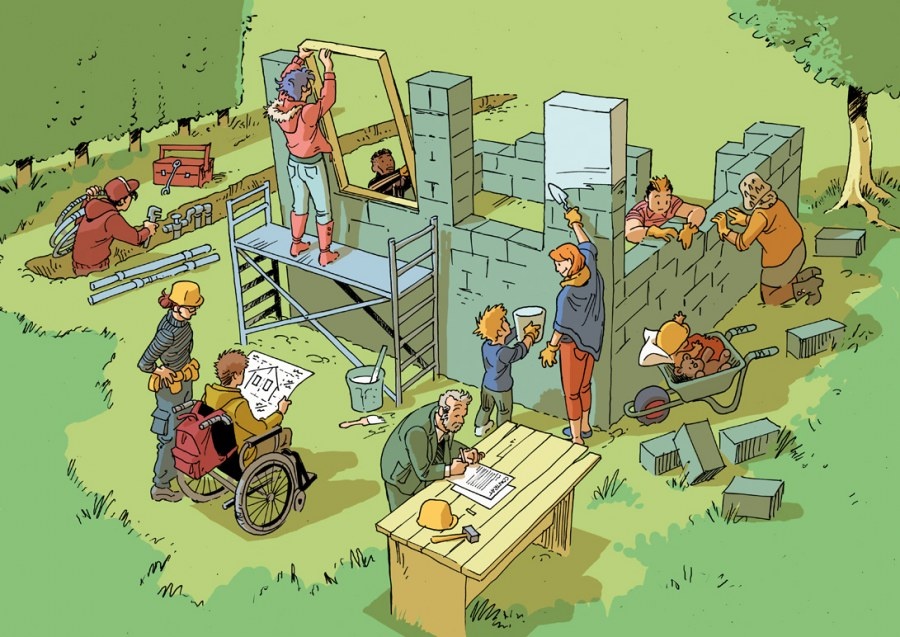
The Ink Link team
Augustin Lebon, scriptwriter and illustrator, took on this mission. Taking part in discussion workshops, Augustin was given the ambitious challenge of depicting 10 indicators, such as Equality, Responsibility for everyone, Listening... These illustrations will be incorporated into the guide that will be distributed to all people working for or benefiting from the Foundation.
This is where The Ink Link's approach takes on its full meaning. To represent an idea, you have to write a script. You have to get all the partners to talk to each other to understand how they interpret this or that notion. For The Ink Link, the scenario is at the heart of the production of an illustrated project. Even with top-quality drawings, if the narrative is not made with the target audience, if "visual literacy" is not taken into account, then the message may not get through...
This is where the expertise of a comic scriptwriter comes in handy. Certain ideas are more or less visually effective. In comics, we try to avoid showing a character with a speech bubble explaining what he's doing. It's the drawing that has to show. Following a workshop with Augustin at an apprentice center, here's an example of a scenario and illustration. The task was to illustrate the "freeze-frame", or "take stock of the situation".
Stages of production
After discussion, here's the proposed scenario:
Make it clear that the characters are on the move, looking back and analyzing the road they've travelled. The drawing gives the impression that the characters are starting out, looking at the trials ahead.
Place a sign near the 3 characters to indicate that there are still stages along the way.
Write on the panels: listening, difference, success, contribution, transformation, openness (the next one).
Augustin then proposed two options.
The team could then react to improve understanding. Here's an example of feedback:
I prefer the standing characters.
When we stop, we usually sit down, but the fact that one is drinking, the other eating... gives us the impression that the journey has been difficult, and that what follows will be. A feeling of drudgery.
With the characters on their feet, there's a feeling of dynamism, of moving forward. Whether or not the road was difficult, and whether it will be. The two people side by side show the support that can be received.
The stop can be signaled by a map: what I've been through, where I want to go (a time to stop and start again).
Augustin was then able to move on to the inked version, and then colorized version.
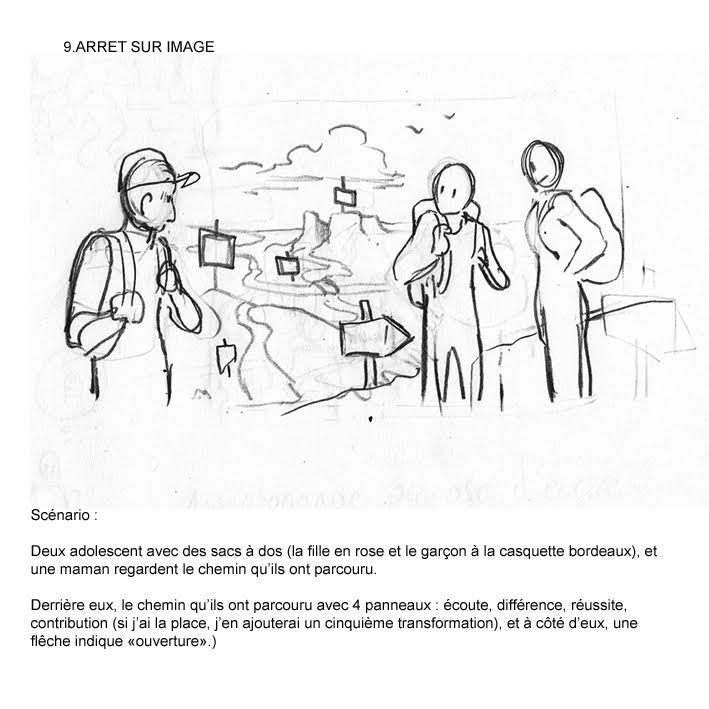
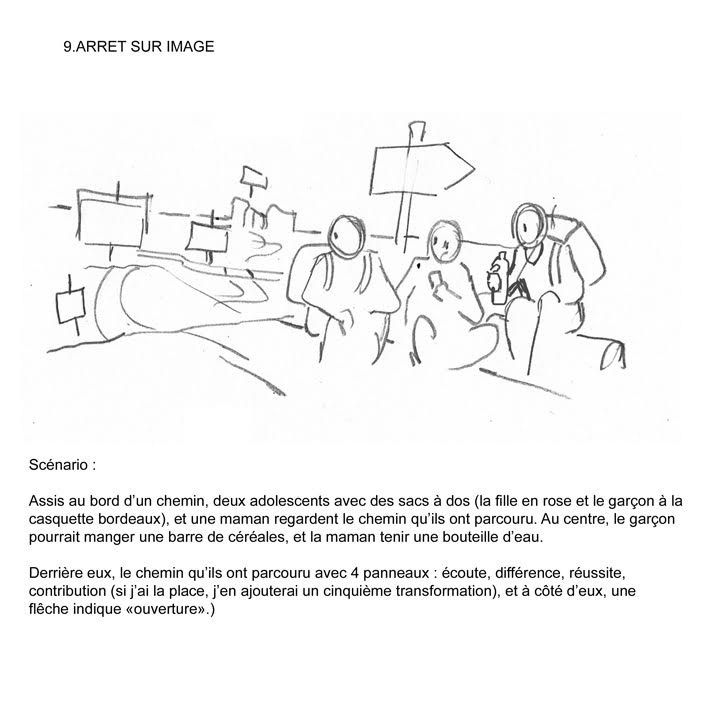
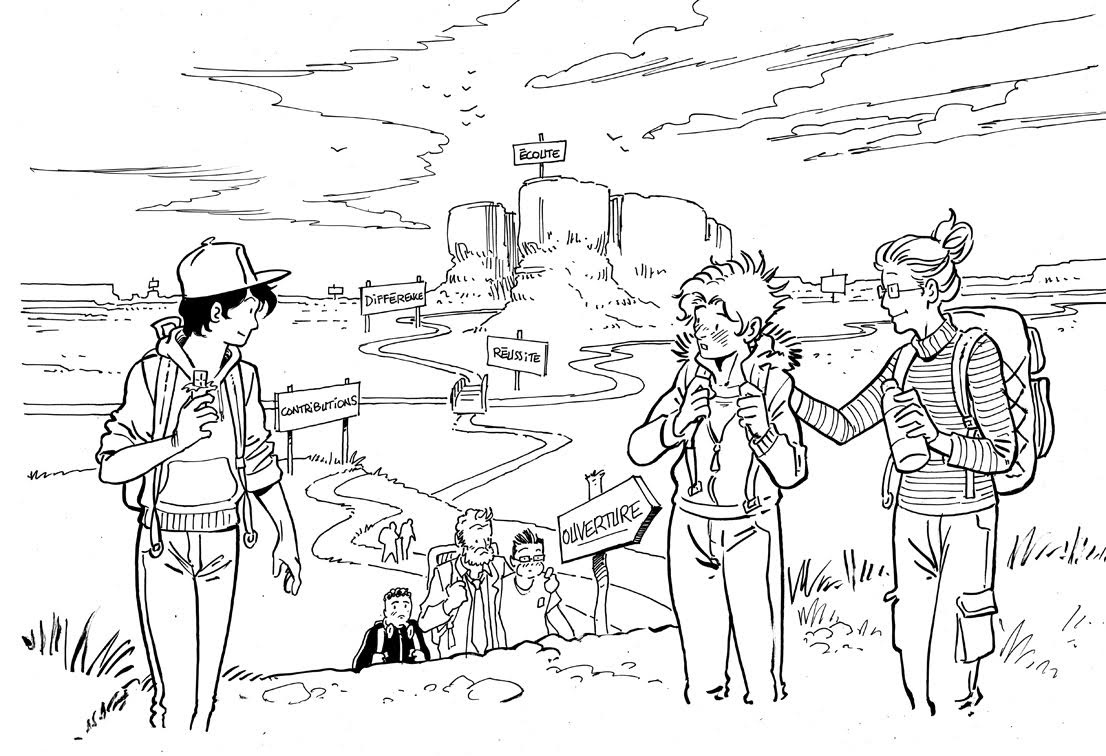
Augustin's feedback:
This type of project is not easy because it involves so many people. I've seen different realities within the Foundation, and it's not easy to bring all points of view together. Every detail of the illustrations is therefore discussed and questioned, to make sure they serve the intended message. This leaves very little room for improvisation, and we had to find an efficient working method to validate each stage of the creation with precision. Fortunately, everyone was motivated and enthusiastic! I've had a lot of positive feedback on the final result, and I'm delighted. I hope the guide will reach as many people as possible, whatever their status or reality.
